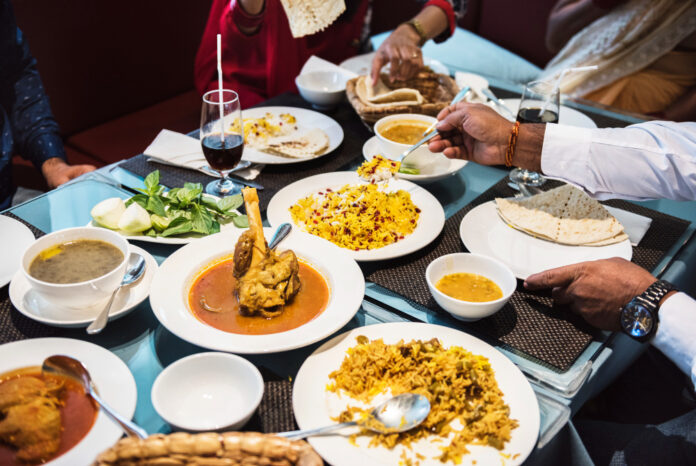The food and beverage sector drives Saudi POS transaction growth, fueled by a sharp increase in point-of-sale transactions in key cities like Riyadh and Jeddah
In the final week of September, Saudi Arabia witnessed a significant surge in point-of-sale (POS) transactions, reflecting the continued strength of consumer spending across the Kingdom. According to the latest figures from the Saudi Central Bank (SAMA), POS transactions climbed by 11.9% between September 22 and 28, reaching a total of SR13.3 billion ($3.4 billion). This impressive Saudi POS transaction growth was led by the food and beverages sector, which saw a dramatic 28% increase in spending during this period, totalling SR2.14 billion.
Saudi Arabia’s economic activity appears to be on a positive trajectory, with the food and beverage industry driving much of the growth. This sector, which plays a critical role in everyday spending, recorded the highest share of POS transactions in late September. The data also highlights notable increases in several other sectors, with recreation and culture spending surging 24.6% to SR308.2 million, and the telecommunications sector seeing a 21% rise, reaching SR116.3 million.
While many sectors experienced robust growth, some saw declines. Spending on education recorded the largest drop, falling by 21.3% to SR100 million. This decline follows an earlier period of heightened expenditure on education as schools reopened in mid-August. The fall comes after four consecutive weeks of strong spending as parents and students prepared for the new academic year.
Embed from Getty ImagesHotel expenditure also decreased during this period, down by 18.3%, with a total of SR238.9 million spent. Transportation costs showed a modest decline of 2.6%, with SR741.9 million recorded in spending. Despite these drops, most sectors demonstrated positive growth as consumer confidence remains solid across the Kingdom.
Aside from food and beverages, restaurants and cafes emerged as a major driver of spending, contributing SR1.98 billion in transactions. Miscellaneous goods and services followed closely behind, accounting for SR1.62 billion. These three sectors collectively made up about 43% of the week’s total transactions, equivalent to SR5.7 billion.
Geographically, Riyadh led the way in POS spending, representing 33.5% of all transactions. In the capital city, transactions totalled SR4.49 billion, an 8.4% increase from the previous week. Jeddah, the Kingdom’s second-largest city, followed with a 6.8% rise in transactions, totalling SR1.82 billion and accounting for 13.6% of the country’s total. Dammam came in third with SR658.7 million, reflecting a 7.1% increase.
Tabuk, however, saw the sharpest rise in spending during this period. The city experienced a 23% increase, with total expenditures reaching SR265.1 million. Other cities also posted significant gains, including Hail, where spending jumped by 22.5% to SR220.9 million, and Abha, which saw an 11% increase to SR167.8 million.
In terms of transaction volume, Tabuk led the way with a 10.9% increase in the number of POS transactions, reaching 4,737 during the week. On the other hand, Makkah reported the smallest increase in transaction numbers, rising by just 2.2% to 8,204 transactions.
Saudi Arabia’s overall growth in consumer spending reflects a broader economic recovery, supported by a combination of rising confidence and strong government initiatives. The increase in POS transactions highlights both the resilience of the Kingdom’s retail and service sectors and the continued appetite for spending among its citizens. The food and beverage sector’s dominance points to the ongoing importance of essentials and dining out as drivers of consumer activity.
As the Kingdom continues to modernise and diversify its economy in line with Vision 2030, the rise in POS transactions provides a clear indicator of domestic demand and economic momentum. Cities like Riyadh, Jeddah, and Tabuk are not only key hubs of growth but also symbolise the broader consumer trends shaping Saudi Arabia’s future.
The sustained increases in various sectors, from food and beverages to telecommunications, reflect an economy adapting to both local and global influences. As digital payments and POS technologies become more integrated into daily life, they are helping to drive greater efficiency and transparency across the Kingdom’s economy. This aligns with Saudi Arabia’s goal to reduce reliance on cash-based transactions and move toward a more modern financial system.
Looking ahead, the Kingdom’s retail and services sectors are expected to remain robust, fueled by ongoing reforms and investments. With key cities continuing to play central roles in driving consumer activity, Saudi Arabia’s economy seems poised for steady growth in the months ahead, even as certain sectors, like education and transportation, experience cyclical fluctuations.
